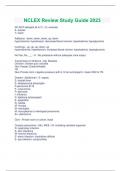Samenvatting
Summary macroeconomics for business
- Vak
- Instelling
- Boek
Summary for the course of Macroeconomics for Business year 2 at the Hogeschool van Amsterdam. Covers chapters 20,21,22,24,29,30 of the book Economics, tenth European edition, ISBN 978-1-292-14785-7
[Meer zien]













